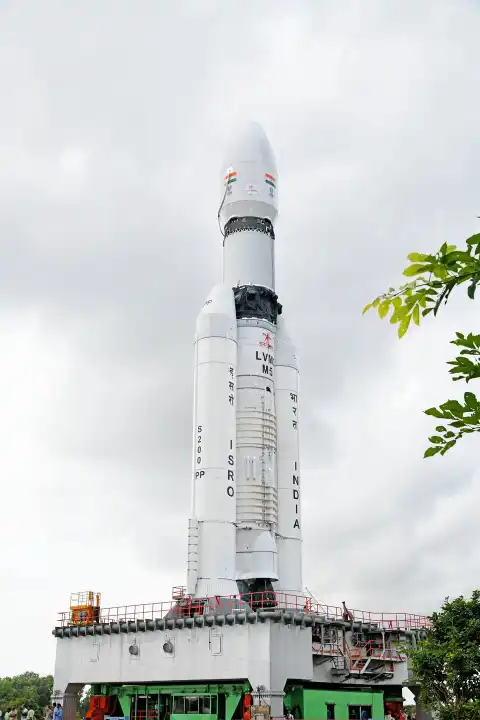India’s latest communication satellite, GSAT-7R, marks a major leap in the country’s maritime security and defence communication systems. Launched on November 2, 2025, from the Satish Dhawan Space Centre in Sriharikota aboard the LVM3-M5 rocket, this mission reinforces India’s growing focus on technological self-reliance and space-based defence infrastructure.

Built for Naval Power
Weighing 4,400 kg, GSAT-7R is the heaviest communication satellite India has launched into the Geosynchronous Transfer Orbit from its own soil. Designed and developed entirely by ISRO, it is the successor to GSAT-7 “Rukmini”, India’s first dedicated military satellite launched in 2013. While Rukmini transformed naval communications by linking ships and command centres across the Arabian Sea and Bay of Bengal, GSAT-7R takes that capability several notches higher.
Advanced Communication Capabilities
The satellite carries multi-band transponders operating in the UHF, S, C, and Ku bands, allowing secure and high-capacity voice, data, and video communication across naval ships, submarines, aircraft, and Maritime Operations Centres. Its advanced payload ensures jam-resistant and encrypted communication, essential for network-centric warfare and joint missions involving the Army and Air Force.
Expanding India’s Reach at Sea
With a 15-year lifespan, GSAT-7R provides secure communication coverage up to 2,000 km from India’s coastline. This broad reach enables the Navy to monitor vital sea lanes, chokepoints, and strategic areas across the Indian Ocean Region, improving coordination during anti-piracy, anti-submarine, and disaster-relief operations. Real-time data sharing will ensure faster decision-making and more effective response at sea.
Integrating Space and Surveillance
GSAT-7R also enhances maritime domain awareness (MDA) by linking space-based communication with surveillance systems such as coastal radars, reconnaissance aircraft, and unmanned vehicles. This integration creates a continuous and unified monitoring network that strengthens India’s ability to detect, track, and respond to maritime threats.
Part of a Larger Vision
Experts view the mission as another milestone under Aatmanirbhar Bharat, highlighting India’s progress in building indigenous defence space technology. The Navy’s assets—satellites, sensors, UAVs, and radars—feed real-time data to the Information Management and Analysis Centre (IMAC), which is now evolving into the National Maritime Domain Awareness (NMDA) platform. Using AI-driven analytics, NMDA will fuse information from multiple sources to give naval commanders a clear, real-time picture of maritime activity.
A Quantum Leap Forward
In short, GSAT-7R cements India’s position as a capable maritime power. By combining advanced communication, surveillance, and data analysis, it equips the Indian Navy with a connected, secure, and future-ready network, ensuring India stays vigilant and in control across the vast expanse of the Indian Ocean.
